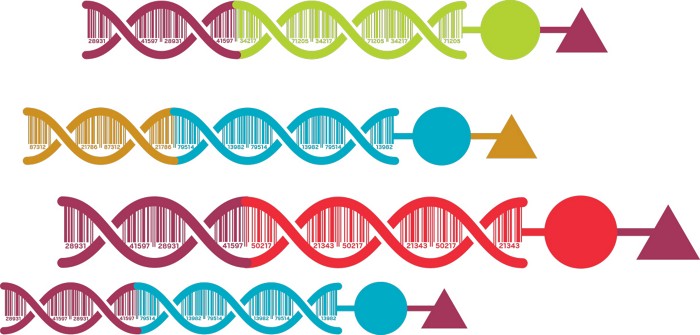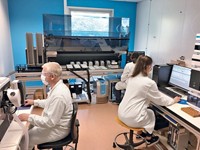Advertisement
Grab your lab coat. Let's get started
Welcome!
Welcome!
Create an account below to get 6 C&EN articles per month, receive newsletters and more - all free.
It seems this is your first time logging in online. Please enter the following information to continue.
As an ACS member you automatically get access to this site. All we need is few more details to create your reading experience.
Not you? Sign in with a different account.
Not you? Sign in with a different account.
ERROR 1
ERROR 1
ERROR 2
ERROR 2
ERROR 2
ERROR 2
ERROR 2
Password and Confirm password must match.
If you have an ACS member number, please enter it here so we can link this account to your membership. (optional)
ERROR 2
ACS values your privacy. By submitting your information, you are gaining access to C&EN and subscribing to our weekly newsletter. We use the information you provide to make your reading experience better, and we will never sell your data to third party members.
DNA
Novartis, Broad Institute researchers unveil new DNA-encoded library
The open source library features a diverse, large array of small molecules for scientists to screen against drug targets
by Megha Satyanarayana
August 28, 2019
| A version of this story appeared in
Volume 97, Issue 34

With a simple package in the mail, scientists can start studying how their favorite protein interacts with millions of small molecules.
This is what researchers from the Broad Institute of MIT and Harvard and Novartis Institutes for Biomedical Research said they hope will happen as they announced their new open-source DNA-encoded library (DEL) on Wednesday at the American Chemical Society national meeting in San Diego.
DNA-encoded libraries (DELs) are large pools of small molecules, each attached to a ribbon of DNA that has a unique sequence of base pairs. A researcher can test the library against a protein of interest, looking for molecules that bind to the protein. Then she can sequence the DNA tags to find the binding molecules’ identities and then synthesize them for future studies.
The Novartis-Broad DEL is different from other open-source DELs because of the compounds it contains—there are more than 3 million small molecules, many of which have unusual structures and well-defined stereochemistries, said Novartis and Broad post-doc Liam Hudson. He presented the DEL during a talk in the Division of Medicinal Chemistry.
Screening hits from the DEL could give researchers molecules that could start a drug discovery project or help them understand specific biological processes, Hudson said. Many companies contract with pharma to test large DELs at a cost, but the Novartis-Broad DEL will be free and available “with no strings attached” to the scientific community, said Stuart Schreiber, the Broad Institute scientist who helped create the project. The team behind the DEL is still working out the details of how to process requests to obtain the DEL and ship it out, said Karin Briner, a vice president at NIBR and medicinal chemist who helped create the collaboration.
Richard Lerner, the Scripps Research Insitutute California researcher who was one of the first scientists to develop DELs, says that the diversity represented by the Novartis-Broad DEL is an important addition to the open-source biology community. Lerner was part of a committee that helped steer the development of an 80 billion compound open-source DEL created by WuXi AppTec that was released in 2018.
“You want big numbers,” he said of the WuXi product, “but you want big diversity too.”



Join the conversation
Contact the reporter
Submit a Letter to the Editor for publication
Engage with us on Twitter